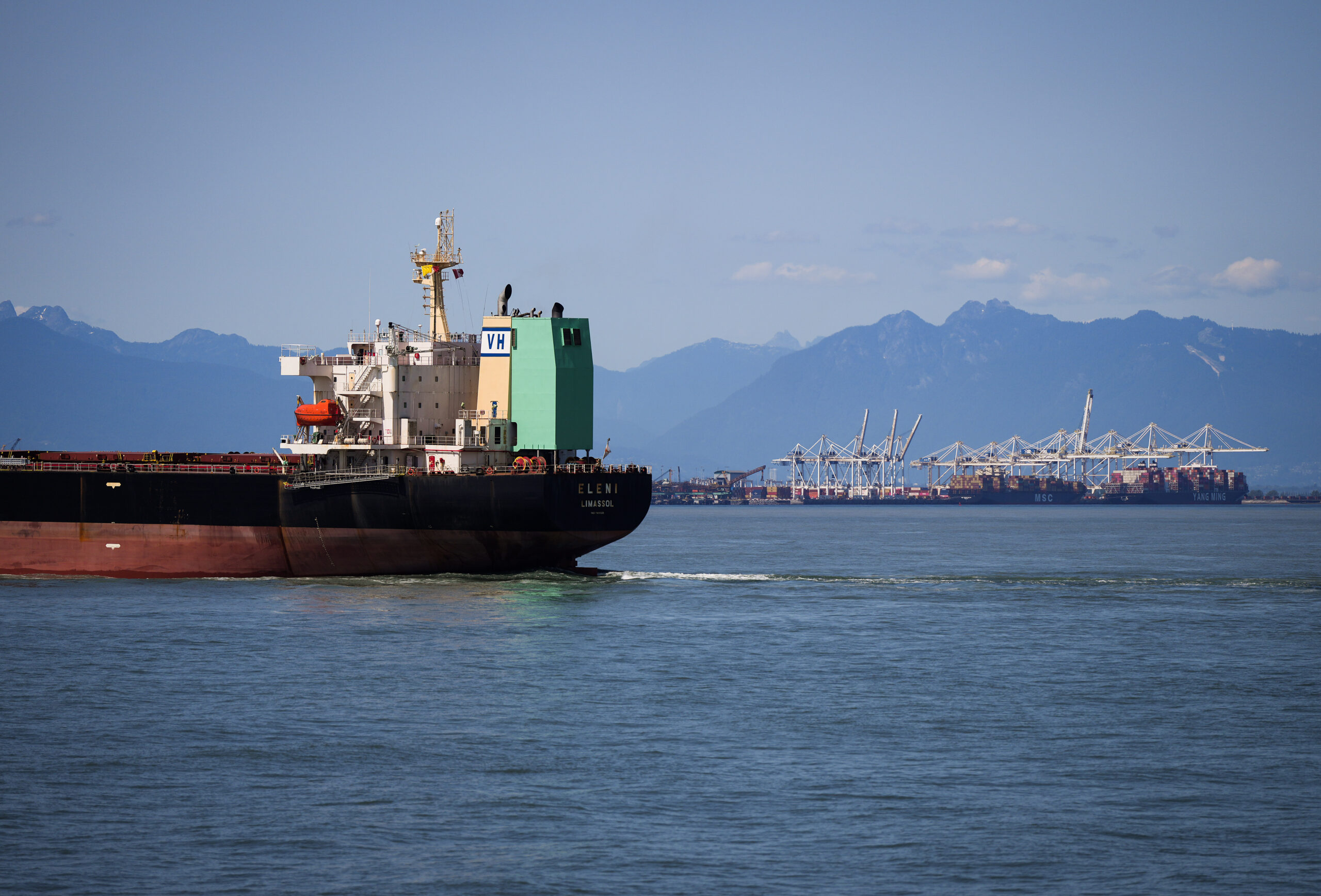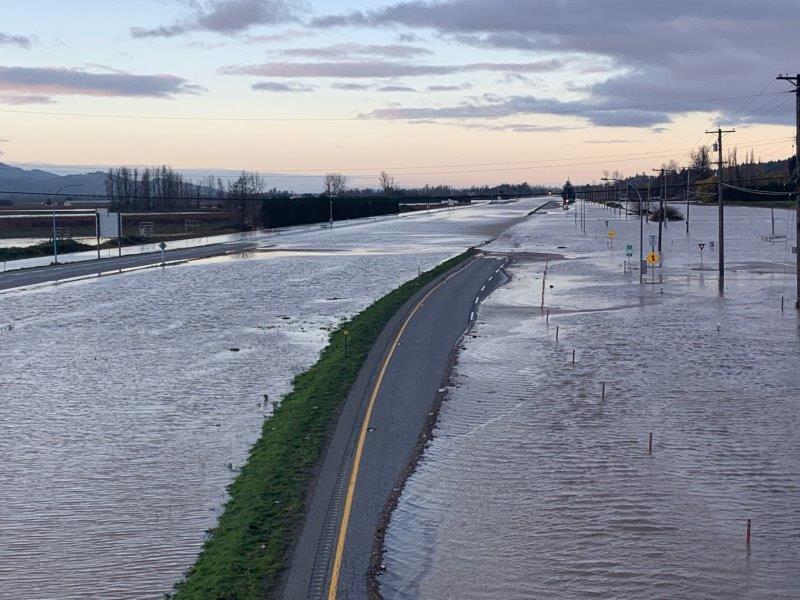
The site of an infamous B.C. mining disaster could get even bigger. This First Nation is going to court — and ‘won’t back down’
Xatśūll First Nation is challenging B.C.’s approval of Mount Polley mine’s tailings dam raising. Indigenous...
Get the inside scoop on The Narwhal’s environment and climate reporting by signing up for our free newsletter.
Vancouver International Airport is at risk of flooding due to climate change, according to a new Senate of Canada report that looks at critical transportation infrastructure across the country to assess how it will fare in the changing climate.
Vancouver’s airport, Canada’s second busiest airport, sits on Sea Island in the Fraser River delta, surrounded by 22 kilometres of dikes to keep the river and sea water at bay. But with sea levels estimated to rise by at least one metre in the next 75 years and an anticipated increase in extreme precipitation and storm surges, the report says the island could be flooded.
“The state of the Vancouver Airport is Vancouver’s problem, it’s Richmond’s problem, but it’s also a problem for every person in Western Canada who drives through there — and it’s a really important freight airport, too,” senator Paula Simons, one of 10 members of the Standing Senate Committee on Transport and Communications, which wrote the report, told The Narwhal.
“This isn’t just a question of your ability to go to Maui. It’s a question of how we get goods and services across the Pacific to Asian markets and how we bring our imports in.”
Simons was shocked to learn the bustling, economically vital airport is at risk.
“As an Edmontonian and a Westerner, I had no idea how vulnerable the Vancouver airport really was,” Simons said. “I was absolutely thunderstruck to realize how vulnerable it is because it’s built on an island. And it’s lovely, but it creates an inherent risk at a time when sea levels are rising.”
Making bridges, buildings, roads and airports better able to handle extreme weather events driven by climate change — often referred to as climate resilience — is an increasingly pressing concern, reflected in the report’s title: Urgent: Building Climate Resilience Across Canada’s Critical Transportation Infrastructure.
“It was too big to do all the infrastructure in all the country, so we chose five areas that we thought were a microcosm of different challenges,” Simons explained.
The committee’s review included two pieces of crucial transportation infrastructure in B.C.: Vancouver International Airport and the Port of Vancouver.
“Their locations make them susceptible to sea-level rise, storm surges and earthquakes that may significantly impact their operating capacity,” the report states. It recommends the federal government “immediately begin consultations on protecting [Vancouver International Airport’s] Sea Island location against storm surges and rising water levels.”

The report also zeroes in on the ways melting permafrost is impacting transportation options in northern Canada and how severe weather and rising sea levels threaten the highways and rail lines that cross the Chignecto Isthmus connecting New Brunswick and Nova Scotia.
“If there is a storm surge at a high tide, it could be a disaster,” Simons said about the low-lying strip of land in Atlantic Canada. “There’s the potential for Nova Scotia to become an island.”
On a brighter note, the report says climate change is extending the St. Lawrence Seaway’s shipping season — a trend that could help reduce greenhouse gas emissions by increasing the volume of goods transported by ship rather than by truck.
The Vancouver airport authority is aware of the challenges climate change poses to the airport. Christoph Rufenacht, the vice-president of airport development and asset optimization, told the senate committee the airport has “remained largely resilient to weather impacts thanks to careful planning and proactive investments.”
He also said the airport, also known as YVR, will continue to “aggressively invest in our local infrastructure,” over the next two to three years. “That includes increasing the height of our dikes and upgrading the eight pump stations on Sea Island to install new equipment with improved efficiency and capacity,” he said during his December 2023 committee appearance.
By the end of the decade, the airport anticipates spending up to $60 million to raise its dikes and as much as $25 million to upgrade pump stations, according to Rufenacht.
“We feel very confident that the planning and infrastructure investment that we have now will serve us for those decades into the future,” he said.
Simons said it’s worth planning now for the more severe climate scenarios Canadians could face in the coming decades.
“I’m not saying that the Vancouver Airport is about to sink into the sea. I’m saying that we need to be preparing to make sure it doesn’t sink into the sea.”

The report, released this week, says the Port of Vancouver is better positioned to withstand climate impacts than the airport because it is built to withstand volatile ocean conditions. But traffic to Canada’s largest port could still be impacted by flooding on the roads and highways that connect to its terminals. Following the November 2021 atmospheric river, damaged highways and bridges made it impossible for goods from the Vancouver port to be transported out of the Lower Mainland for more than a week, the report notes.
Coordinating the actions needed to protect Canada’s critical infrastructure from climate impacts may prove difficult, since it often involves jurisdictional overlap that can leave gaps in responsibility, Simons said.
“What really struck me in every part of this report is that people are working earnestly on their little bit of the problem, but nobody is looking at the whole elephant,” she said, adding, “Canada doesn’t do very well when it has to solve problems that are complicated by jurisdictional turf-guarding.”
B.C.’s Ministry of Transportation declined to answer questions from The Narwhal about the province’s involvement in climate resiliency efforts at Vancouver’s airport, saying the federal government is responsible for airports.
According to Rufenacht, any discussion about moving the airport would likely involve “Transport Canada, the provincial government, regional agencies, businesses and customers.”
Neither the Vancouver Airport Authority or Transport Canada responded to requests for comment by publication time.
Simons did get the opportunity to question Kaye Krishna, B.C.’s former deputy minister of transportation, during a senate hearing in December 2023. When the senator asked Krishna whether the ministry has done any planning for a potential new location for the airport, the deputy minister said, “That’s not something that we are currently engaged in.”
Krishna told Simons and other members of the senate committee the ministry works closely with the airport authority to ensure resilient road access to the airport. The province is also participating in an effort led by Transport Canada and Infrastructure Canada to map out critical hazards and risks to infrastructure, according to Krishna.
After studying the threat climate change poses to Canada’s infrastructure, Simons hopes to see more collaboration between all levels of government to address the threats immediately and in the long-term.
“None of this gets solved if only one order of government comes to the table,” she said.
Get the inside scoop on The Narwhal’s environment and climate reporting by signing up for our free newsletter. When I visited my reserve, Moose Factory,...
Continue reading
Xatśūll First Nation is challenging B.C.’s approval of Mount Polley mine’s tailings dam raising. Indigenous...

As the top candidates for Canada’s next prime minister promise swift, major expansions of mining...

Financial regulators hit pause this week on a years-long effort to force corporations to be...

